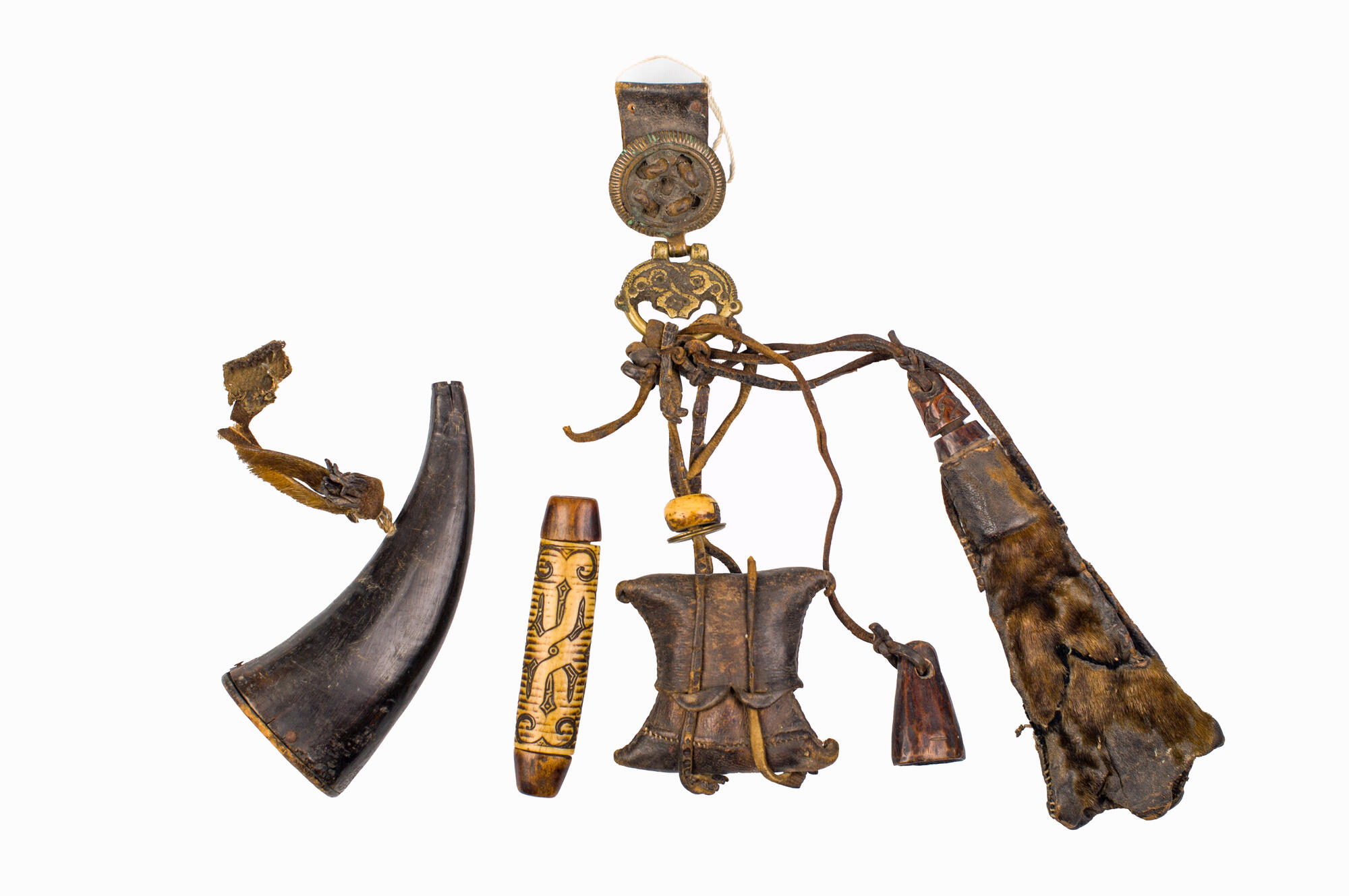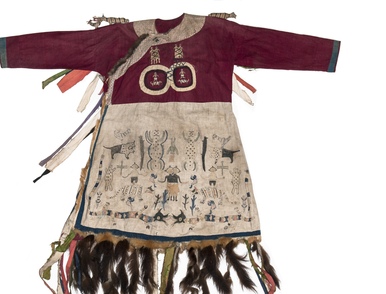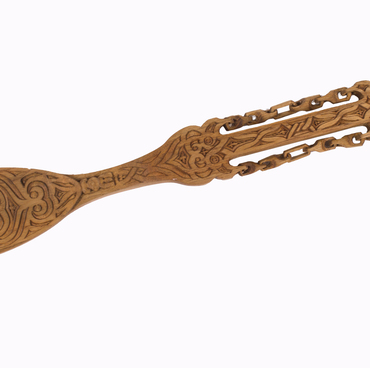A belt with numerous accessories was an obligatory part of a taiga hunter’s costume. They were suspended from it on special bronze buckles. The belt served many purposes: it was a part of clothing, a method of carrying necessary accessories, and an element of fishing equipment.
The Amur peoples usually made the base of the belt from a thin strip of elk or seal skin, which was notable for its great durability. In order to put on such a belt, it was first placed on the abdomen and then wrapped twice around the waist, after which it was fastened in the front with a buckle or a simple knot.
Besides waist belts, men also wore shoulder hunting belts. They were common in the Evenki tradition. Essential items were suspended from the belt on straps. They were attached through slits in the belt or on belt loops, as well as with the help of copper-bronze figured pendants, which had a complex two- or three-piece construction.
The last method was the most widespread and was common among all the peoples of the Amur region, except for the Udege. Researchers believe that such metal belt pendants were borrowed from the Turkic-Mongolian peoples.
Being in the hunt for a long time, the man had to provide himself with everything that he could need in the taiga: both in his camping life and directly in the hunt. These included a large knife in a sheath, a tool for untying knots, a device for cleaning a pipe, a thin knife with a curved blade for gutting fish as well as making stroganina (frozen fish or meat cut into thin slices), pouches for tinder, a flint and steel, cases for shot and arrowheads, a bar for sharpening knives, a powder box, and an iron awl.
The men’s belt sets of
the peoples of the Amur region always included bone needle holders. In other
regions of Siberia men wore them quite rarely, only if they left home for a
long time. Each hunter had his own set, and often passed it on to his sons by
inheritance. Most of the items, which were made of bone, wood and metal, were
abundantly decorated. The patterns were not so much of aesthetic value, but
rather served as an amulet.







